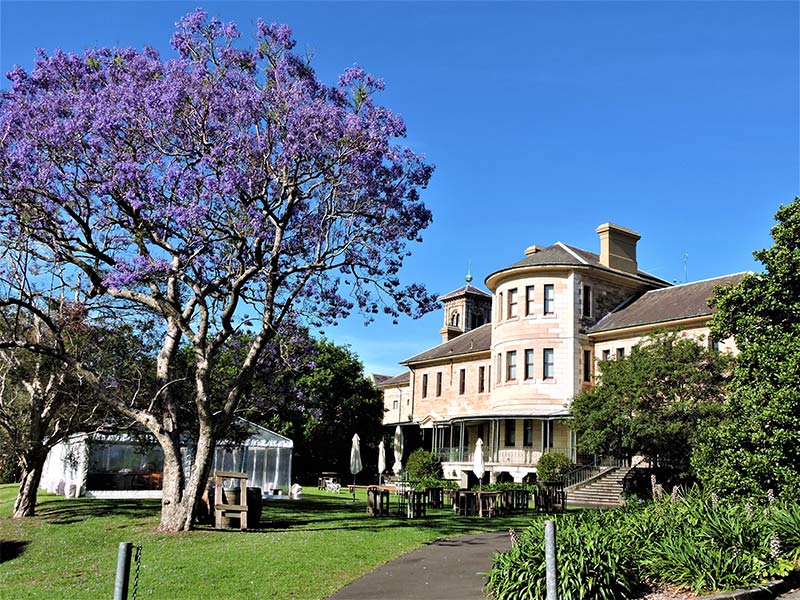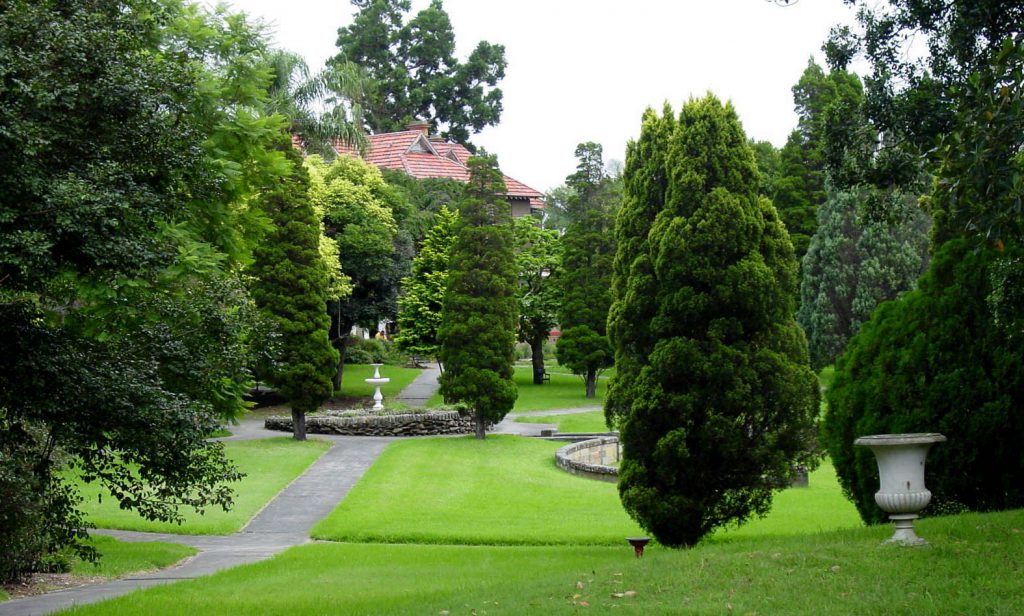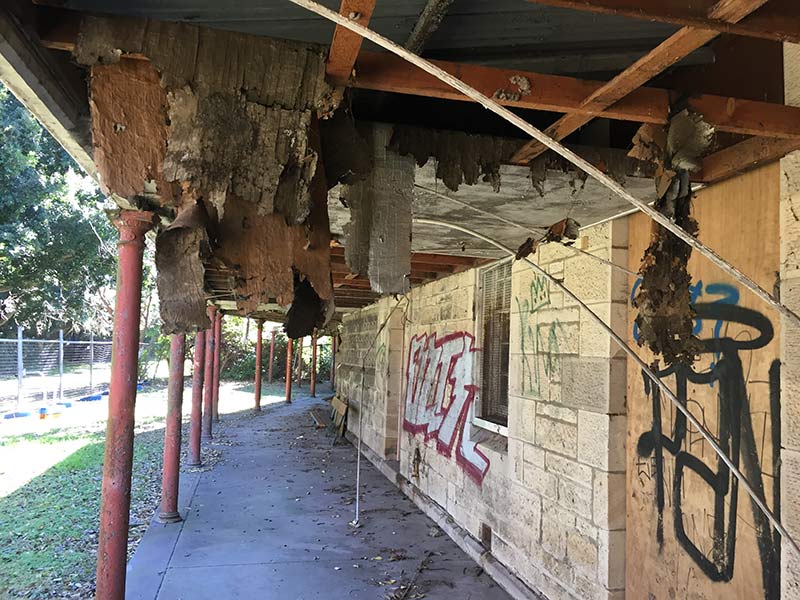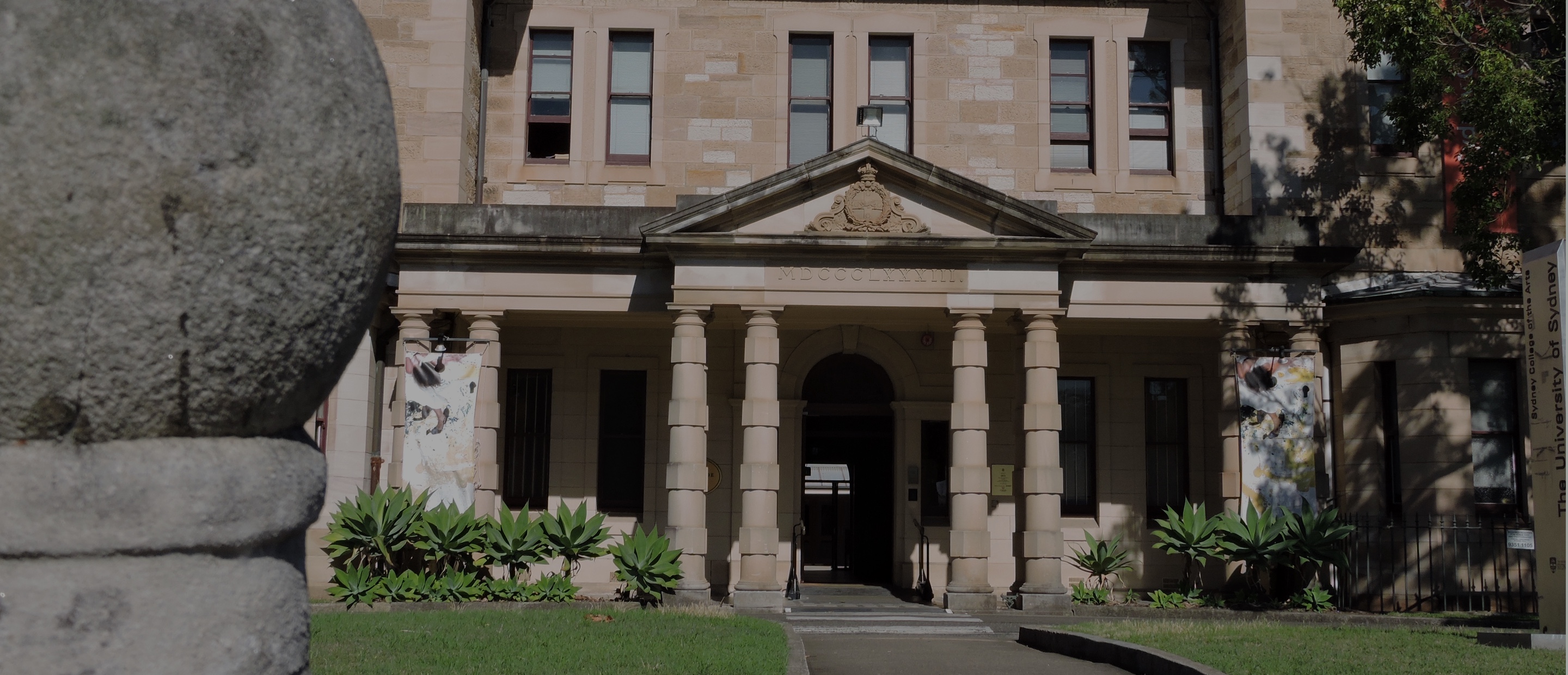
A brief history of Callan Park
In pre-colonial times, the land was home to the Wangal and Gadigal people of the Eora nation.
When European settlers arrived:
Garry Owen Estate
Callan Park was initially a combination of purchases by Crown Solicitor and Police Magistrate John Ryan Brenan. In 1839 he bought what he then named the Garry Owen estate.
His residence, Garry Owen House, built about then and possibly designed by Colonial Architect Mortimer Lewis, was on an elevation overlooking the Parramatta River, with a tree lined avenue (part of which survives) from wrought iron gates on Balmain Road through spacious gardens. In 1841, Brenan bought an additional three acres west of his estate and built Broughton House, which he sold with its extensive grounds in 1845.
For many years, Garry Owen was a focus for social life in the area until Brenan’s bankruptcy in 1864 forced him to sell the estate to Sydney businessman John Gordon. Gordon renamed the property Callan Park, and in 1873 subdivided the land for auction as a new waterfront suburb.

The beginning of Callan Park Mental Hospital
Instead, with remarkable foresight, the Colonial Government bought the whole 104.5 acres as a site for a new lunatic asylum to be designed according to the enlightened views of the American Dr Thomas Kirkbride.
Colonial Architect James Barnett worked in collaboration with Inspector of the Insane Dr Frederick Norton Manning to produce a group of some twenty neo-classical buildings, completed in 1885 and subsequently named the Kirkbride Block, offering progressive patient care.
Built of sandstone mainly quarried on site, the buildings have slate roofs, timber floors, and copper down pipes. Spacious rooms lead to verandahs linking several courtyards. The verandahs are supported by hundreds of cast iron columns acting as down pipes for water which is fed into an underground reservoir.
Architectural Masterwork
Dominating the complex is a venetian clock tower with a ball which rises and falls according to the water level of the reservoir. Essential to testament was the calming influence of natural beauty and pleasant parklands, designed by Director of the Botanic Gardens, Charles Moore.
Further landscaping in the 1890’s included the planting of palms and and rainforest trees, and the conversion of an informal pond to the curious sunken garden, which although waterless, survives.
Present day Callan Park
The Kirkbride complex continued to be used for patients until 1994 when the last remaining services were transferred to other buildings in the expansive grounds, towards the Broughton Hall (southern) end of the site. After massive renovations, the Sydney College of the Arts took possession in 1996.
The historic sandstone buildings and linking courtyards have been beautifully restored and new occupants provide an illustration of sympathetic use of a heritage complex. Some of the other historically significant buildings on the Callan park estate were not so fortunate, being allowed to fall into disrepair after being vacated.

Garry Owen House
John Brennan’s Garry Owen House was also used by Callan Park patients for many years and later became a nurses training School.
It too had undergone extensive internal and external refurbishment and now houses the NSW Writer’s Centre. Although many alterations were made over the years, enough of the original 2-storied Greek Revival House remains to make one of the most important heritage buildings in the municipality.

Broughton House
Sadly Broughton House has not fared so well. A two-storey Georgian house with circular drive, it was built in 1842 and is the sole survivor of three grand houses in this precinct. It had several owners after being sold by John Brenan in 1845.
From 1864 to 1905, Broughton House and nearby Kalouan (demolished in 1932) were the family homes of Sydney businessman John Keep.
The house became a 20 room mansion, called Broughton Hall by its owner, and extensive pleasure gardens surround both houses.
Annadale timber merchants William and Frederick Langdon bought the combined properties in 1912, and in a patriotic response to the Anzac casualties of 1915, offered the site as a convalescent hospital for shell-shocked soldiers.
Broughton Hall functioned as No. 13 Australian Army Hospital until 1921 when it became NSW’s first psychiatric clinic for voluntary patients. The founder was Dr Sydney Evan Jones who developed a leading teaching hospital and incorporated the existing 25 acres of lawns, fish ponds, and summer houses into his landscaped therapeutic gardens.
Broughton House underwent many additions and functions until it was vacated in 1978, two years after Broughton Hall psychiatric clinic amalgamated with the adjacent Callan Park Mental Hospital to form the Rozelle Hospital. Current theories on mental health have resulted in under-funding for institutional care, leading to the gradual closure of wards, vandalism and fire damage of Broughton House, and serious neglect of the heritage gardens.

Callan Park is owned by the NSW Department of Health. Today, it is a treasured oasis of green space and irreplaceable heritage architecture, used for contemplation, play, sport and respite from the busy urban environment that surrounds it. It is used for passive recreation as well as a place to work, study, live and perform. Meanwhile, the buildings continue to decay from neglect, and Friends of Callan Park continue to fight for this ‘jewel of the inner west’ to be properly funded, managed and maintained so it can continue to be enjoyed for decades to come.

Patients’ Records
Callan Park has a long history of use as a psychiatric hospital. We are often contacted by people searching for records of family members who were patients.